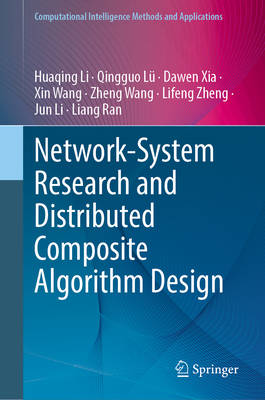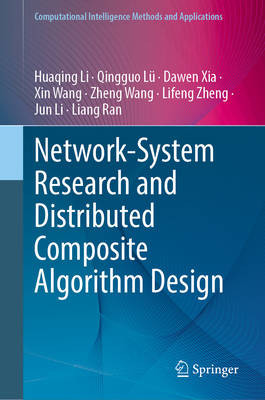
- Retrait gratuit dans votre magasin Club
- 7.000.000 titres dans notre catalogue
- Payer en toute sécurité
- Toujours un magasin près de chez vous
- Retrait gratuit dans votre magasin Club
- 7.000.0000 titres dans notre catalogue
- Payer en toute sécurité
- Toujours un magasin près de chez vous
Network-System Research and Distributed Composite Algorithm Design
Huaqing Li, Qingguo Lü, Dawen Xia, Xin Wang, Zheng Wang, Lifeng Zheng, Jun Li, Liang Ran
305,45 €
+ 610 points
Description
With the rapid advancement of sensor technology and digital system, the capabilities of network communication have significantly improved, allowing multiple computing nodes to exchange information and collaborate seamlessly through networks. This progress has accelerated the development of distributed optimization theory and its applications in emerging fields such as low altitude economy, big data, and artificial intelligence. These emerging domains usually involve solving complex large-scale optimization problems, making it difficult for traditional centralized methods to handle. Therefore, it is necessary to study distributed algorithms to solve complex optimization problems in large-scale networked systems. In addition, the emergence of applications of large language model further stimulates researchers' growing interest in distributed optimization. This book provides the advanced methods and techniques of distributed optimization in networked systems, and thus is necessary and important for the research community. This book focuses on designing high-performance algorithms for solving more practical and complex optimization problems (multi-block optimization, composite optimization, constrained optimization, optimization with diversity objective functions, etc.) in the context of distributed optimization in networked systems and their successful application to real-world applications (model predictive control, smart grids, etc.). Readers may be particularly interested in the book on consensus and optimization protocols, forward-backward splitting methods, proximal gradient methods, primal-dual methods, fixed point methods, asynchronous communication/computaion mechanisms, randomized block coordinate techniques, operator splitting schemes, uncoordinated step sizes strategies, etc., in the process of distributed optimization in various networked systems. This book will introduce readers to the latest and advanced techniques in "Network-System Research and Distributed Composite Algorithm Design", and help them develop their own novel distributed algorithms that have practical applications. The prerequisite for understanding this book is to master basic mathematical knowledge, including graph theory, matrix theory, linear algebra, probability theory, etc. This book is meant for the researcher and engineer who uses distributed optimization algorithms in fields like control theory, electronic information, artificial intelligence, and computer science, etc. It can also serve as complementary reading for distributed optimization in networked systems at the post-graduate level.
Spécifications
Parties prenantes
- Auteur(s) :
- Editeur:
Contenu
- Nombre de pages :
- 281
- Langue:
- Anglais
- Collection :
Caractéristiques
- EAN:
- 9789819509102
- Date de parution :
- 03-11-25
- Format:
- Livre relié
- Format numérique:
- Genaaid
- Dimensions :
- 155 mm x 235 mm

Les avis
Nous publions uniquement les avis qui respectent les conditions requises. Consultez nos conditions pour les avis.






